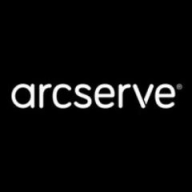

Teradata and Arcserve UDP cater to different technical needs, with Teradata focusing on data analytics and warehousing, and Arcserve UDP enhancing data protection and backup. Teradata appears to have the upper hand in analytics with its advanced processing capabilities, whereas Arcserve UDP excels in data protection.
Features: Teradata's parallel processing, scalability, and sophisticated analytics allow it to handle extensive data and complex queries efficiently. Arcserve UDP offers strong data protection features, including deduplication and compatibility with various environments, providing robust backup solutions.
Room for Improvement: Teradata needs improvement in pricing, adaptability for cloud environments, and better OLTP support. It also requires enhancements in UI and integration with third-party tools. Arcserve UDP could benefit from better integration capabilities, faster backup processes, and more user-friendly interfaces, along with enhancements in licensing and cloud support.
Ease of Deployment and Customer Service: Teradata provides a wide range of deployment options, including on-premises and cloud, with superior support, often rated highly in customer satisfaction. Arcserve UDP, primarily deployed on premises and in hybrid clouds, offers adequate customer service, although it experiences variability in satisfaction levels due to delayed technical support responses.
Pricing and ROI: Teradata is known for premium pricing, justified by its performance value in large-scale deployments. It's seen as worthwhile for its ROI in sophisticated analytics. Arcserve UDP presents a more affordable option but faces criticism for high pricing relative to some competitors. Its pricing is seen as reasonable, especially for smaller enterprises, but needs improvement in cost-effectiveness concerning functionality and support.


Teradata is a scalable data analytics platform designed to meet enterprise demands for large-scale data management and processing, focusing on performance, scalability, and security for complex query executions.
As a leading data warehousing solution, Teradata integrates advanced analytics enabling organizations to derive insights from massive datasets. It supports high-volume data workloads with its architecture optimized for analytical queries. Users benefit from its robust scalability, allowing seamless expansion as data grows. Teradata's SQL engine is compatible with a wide range of data types, ensuring flexibility in data analysis. With advanced security measures, it protects sensitive data across various environments, providing peace of mind to users handling critical information.
What are the most important features of Teradata?Teradata is widely used in industries like finance, telecommunications, and healthcare, where data-driven decisions are critical. Companies leverage its robust analytics capabilities to enhance customer experiences, streamline operations, and ensure compliance with regulatory requirements. In these sectors, quick access to data insights can significantly impact competitive advantage.
We monitor all Backup and Recovery reviews to prevent fraudulent reviews and keep review quality high. We do not post reviews by company employees or direct competitors. We validate each review for authenticity via cross-reference with LinkedIn, and personal follow-up with the reviewer when necessary.